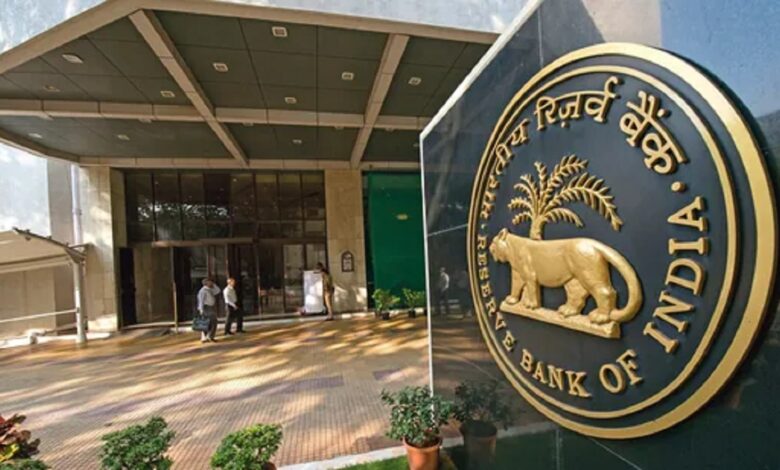Indian Economy may take 12 years to regain Epidemic Losses RBI Report

Indian Economy may take 12 years to regain Epidemic Losses RBI Report
The coronavirus has continued to blitz India’s damaged frugality, putting the growing pressure on Prime Minister Narendra Modi to nurture a better recovery and get the country back to its position. it harmed the Indian economy to its core and brought a tremendous level of losses in everyone’s lives.
The coronavirus, which has struck in two billows, has killed multiple thousands of citizens and here and there has brought metropolises to a halt. Infections and deaths have eased, and the country is returning to figure. Economists prognosticate that growth could issue in the improvised half of the time on paper.

Still, the damage could take time to undo. The profitable affair was 9.2 lower for the April-through-June period this time than what it had been for the constant period in 2019, harmonious with India Conditions, a credit conditions agency.
The Indian frugality may take further than a decade to overcome the losses expiring from the COVID-19 epidemic, said a report published by the Reserve Bank of India.
In an analysis of the impact of COVID-19 on frugality, the report has estimated the affair losses during the epidemic period at around Rs 52 lakh crore.
The disquiet from repeated swells of COVID-19 have are available in the way of sustained recovery and the daily trends in GDP basically followed the ebbs and flows of the epidemic, said the chapter ‘Scars of the Epidemic’ in the Report on Currency and Finance (RCF) for the time 2021-22.

Following a sharp compression within the first quarter of 2020-21, the profitable instigation precipitously picked up till it had been hit by the alternate surge in April-June 2021-22.
Also, the impact of the third surge, concentrated in January 2022, incompletely downsized the recovery process. With the ongoing Russia-Ukraine conflict, the downcast pitfalls to global and domestic growth are getting accentuated through the swell in commodity prices and global force chain dislocations, it noted.
“The epidemic could be a watershed moment and also the ongoing structural changes catalyzed by the epidemic can potentially alter increasing line within the medium-term,” the report said.
The pre-COVID trend growth rate works fraudulent on6.6 percent (CAGR for 2012-13 to 2019-20) and banning the retardation times, it stands at7.1 percent (CAGR for 2012-13 to 2016-17).
” Taking into account the rate of 6.6% for the year 2020-2021. It was 8.9% for 2021-2022 and assumed a rate of growth of seven.2 percent for 2022-23, and7.5 percent beyond that. India is anticipated to cover up the COVID-19 losses in 2034-35,” the report said.

It pegged all of the affair losses for individual times at Rs19.1 lakh crore, Rs17.1 lakh crore, and Rs16.4 lakh crore for 2020-2021, 2021-2022, and 2022-2023, independently.
The report has been penned by officers in the RBI’s Department of Economic and Policy Research (DEPR). The RBI, still, said the findings and conclusions expressed in the report are entirely those of the contributors and don’t represent the views of the fiscal institution. The tips of reforms initiated to fight the pre-COVID retardation in confluence with fresh measures and enterprise during the epidemic will help launch the frugality on a sustainable high growth path, it said.
As per the report, the behavioral and technological changes brought about by the epidemic may introduce a brand new normal which might not inescapably ham the pre-pandemic trends but would be erected on a more effective, indifferent, clean, and green foundations.

From April to June 2020, India’s GDP dropped by a huge24.4. According to the most recent value estimates, within the alternate quarter of the2020/21 time (July to September 2020), the frugality contracted by a redundant 7.4%. The recovery in the third and fourth diggings (October 2020 to March 2021) was still weak, with GDP rising0.5 and1.6, independently. This means that the general rate of compression in India was (in real terms)7.3 for the complete2020/21 financial time.
After the independence period, India’s value has declined only fourfold before 2020 – in 1958, 1966, 1973, and 1980. It was the largest drop being in 1980 (5.2). This means that2020/21 is the worst time in terms of profitable compression within the country’s history, and far worse than the general compression within the world
While husbandry worldwide is hit hard, India has suffered one in every of the most important condensation. During the2020/21 financial time, the rates of decline in GDP for the globe were3.3 and2.2 for arising requests and developing husbandry. The fact that India’s rate in 2019 was among the veritably stylish makes the drop because of Covid-19 indeed more conspicuous.
Comparing public severance rates in 2020, India’s rate of seven.1 indicates that it’s performed fairly inadequately – both in terms of the globe normal and compared with a collection of reference group husbandry with analogous per capita inflows. Severance rates were more muted within the reference group husbandry and were also kept low by generous labor request programs to keep people at work.

Despite the size of the epidemic, fresh popular allocation to multitudinous social safety measures has been fairly low in India compared with other countries. Although the country might look analogous to the reference group in non-health sector measures, the redundant health sector financial measures are but half those within the reference group. Further worryingly, the Indian government’s blazoned allocation within 2021 taking into account similar measures does not show a rise, formerly affectation is taken into consideration.
During the epidemic, on the one hand, credit had grown because of torture in both homes and little enterprises. On the contrary hand, large enterprises hadde-leveraged and saw negative credit growth. This trend appears to enjoy changed within the rearmost data.
In September, India’s gross domestic product (GDP) grew by 8.4 percent. There was a series of other high-frequency indicators that suggest that economic recovery is gaining momentum.
However, the most recent variant of Covid-19-Omicron may pose a fresh risk to the ongoing economic recovery. The uncertainties around the virus could potentially increase restrictions, thus impacting the nascent recovery visible in the contact-intensive sectors. The risk posed by the variant could delay a sustained revival in consumption spending.
edited and proofread by nikita sharma






